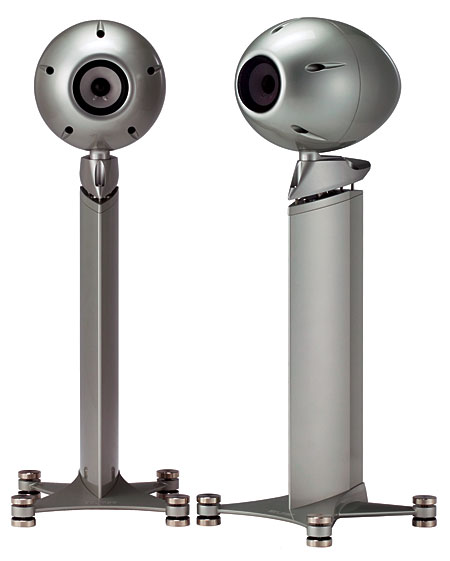.. Latimer Acoustics ...
Link? I am having trouble finding their site.
dave
Perhaps Latimer Acoustics is no more
The best link I could find is here: https://www.retwine.co.nz/site//file/product/50/files/Acoustic Multigrade_spec.pdf which illustrates one of their products (Multigrade) which was a faced Acoustop foam.
And the WooferTester was (is) the Smith Larsen device.
The best link I could find is here: https://www.retwine.co.nz/site//file/product/50/files/Acoustic Multigrade_spec.pdf which illustrates one of their products (Multigrade) which was a faced Acoustop foam.
And the WooferTester was (is) the Smith Larsen device.
Have to agree 100%,And puts it all into the driver. The little bit of output lost are the tiny little details that give life & blood to the voices, instruments, and space the performance seems to take place in.
Choose your compromises. I have consistently found that given a decent cabinet, the downsides of decoupling the driver far outweigh the upside.
I started playing with this when we short circuited the gaskets in the, then new, KEF 105 midranges to make large gains in midrange DDR.
dave
Im playing with a7p in OB WAW currently. The harshness from a7p was unbearably bad on this baffle, even though it is it decently thick MDF.
Eventually it lead to looking at the driver coupling, they were not very tightly coupled on this baffle.
Based on your posts a tight coupling was test instead, going further and removing the rubber gasket for the first time.
The harshness was greatly reduced, but some of the 'life and soul' as you put it had been restored, less obscuration of low level details.
This is even a case where decoupling would make sense as the high power levels for the OB woofer create significant baffle vibrations.
Then the A7p was tested baffleless , suspended with string, out of curiousity... the treble and mid sounded violently shrill..
It does seem good coupling to good baffle is extremely important.
Do you use the gaskets with MA drivers or opt for maximum coupling?
Yes, i use the gaskets. But the Alpair ones are not all that squishy, and i need the tight seal, not doing OBs.
dave
dave
There is a garage manufacturer in Japan who used to make "floating mount adaptor". (now discontinued)
??????????????????????????
Japanese manual (PDF file)
https://ac-audio.org/aca_fmt_10_t_manual2.pdf
A my friend who uses this says that it makes the clear sound and less cluttered.
It's a good DIY reference?


??????????????????????????
Japanese manual (PDF file)
https://ac-audio.org/aca_fmt_10_t_manual2.pdf
A my friend who uses this says that it makes the clear sound and less cluttered.
It's a good DIY reference?


Most of your designs have coupling from the bracing so I suppose it's also not as necessary?
Not all.
But yes, i like to “support" the drive front & rear.
dave
Nice idea. What is the purpose of the "dead mass"?There is a garage manufacturer in Japan who used to make "floating mount adaptor". (now discontinued)
??????????????????????????
Japanese manual (PDF file)
https://ac-audio.org/aca_fmt_10_t_manual2.pdf
A my friend who uses this says that it makes the clear sound and less cluttered.
It's a good DIY reference?
nandappe,
Fujitsu Ten Eclipse takes that same approach to another level with the mass “reaching” outside the enclosure and to the floor.


Hi-Fiスピーカー | ECLIPSE Home Audio Systems
Perhaps you can translate the captions for us?
dave
Fujitsu Ten Eclipse takes that same approach to another level with the mass “reaching” outside the enclosure and to the floor.


Hi-Fiスピーカー | ECLIPSE Home Audio Systems
Perhaps you can translate the captions for us?
dave
Nice idea. What is the purpose of the "dead mass"?
Instead of using the enclosure as an anchor mass.
dve
Dear scottjoplin,
Google has translated the manufacturer's Japanese description into English.
1.The stone composite/resin dead mass is hard and does not produce metallic resonances, resulting in a natural and thick sound quality.
2.The solidly bonded construction of the dead mass provides an ideal mechanical ground.
3.The sound quality is clear and uncluttered.
4.High signal-to-noise ratio and a sense of quietness despite the high number of notes.
5.No breakage and no annoyance. Large dynamic range.
6.The sound power of live instruments is well reproduced.
7.Good rise of sound.
8.A sense of thickness and a good sense of bass.

Google has translated the manufacturer's Japanese description into English.
1.The stone composite/resin dead mass is hard and does not produce metallic resonances, resulting in a natural and thick sound quality.
2.The solidly bonded construction of the dead mass provides an ideal mechanical ground.
3.The sound quality is clear and uncluttered.
4.High signal-to-noise ratio and a sense of quietness despite the high number of notes.
5.No breakage and no annoyance. Large dynamic range.
6.The sound power of live instruments is well reproduced.
7.Good rise of sound.
8.A sense of thickness and a good sense of bass.

Thank you for showing this 🙂nandappe said:It's a good DIY reference?
The "un-sprung" mass of a driver is arbitrary, and as a result you'd have to argue the other way - ie. why shouldn't you choose the mass against which the mms works?.. so the question of what the mass is for, is moot as I see it.scottjoplin said:What is the purpose of an "anchor mass"?
It reduces the movement due to the reaction force? As far as I'm aware the only effect of the driver not being "mechanically grounded" is a slight reduction in SPL.
It reduces the movement due to the reaction force? As far as I'm aware the only effect of the driver not being "mechanically grounded" is a slight reduction in SPL.
Can you explain the effect of mid to high-end issues (ringing? distortion?) being exacerbated by no/light coupling to a solid MDF baffle with the Alpair ?
Last edited:
- Home
- Loudspeakers
- Full Range
- Softly coupling a driver to the cabinet



